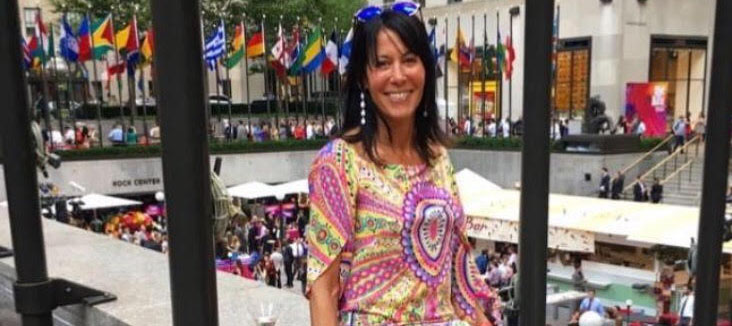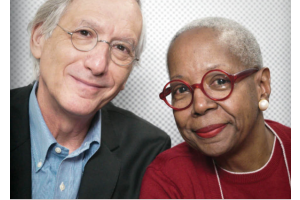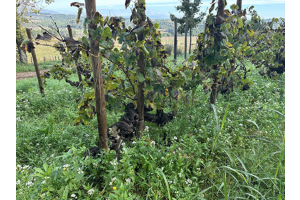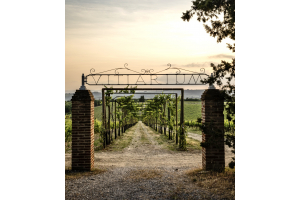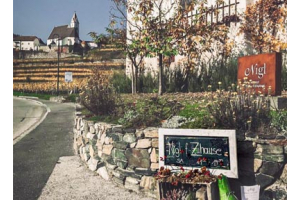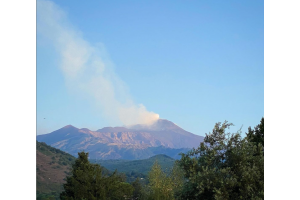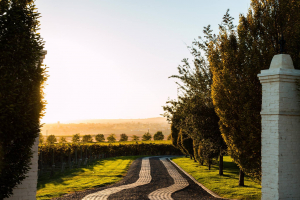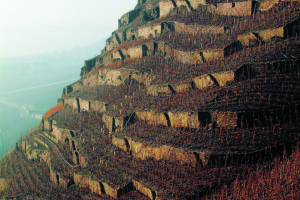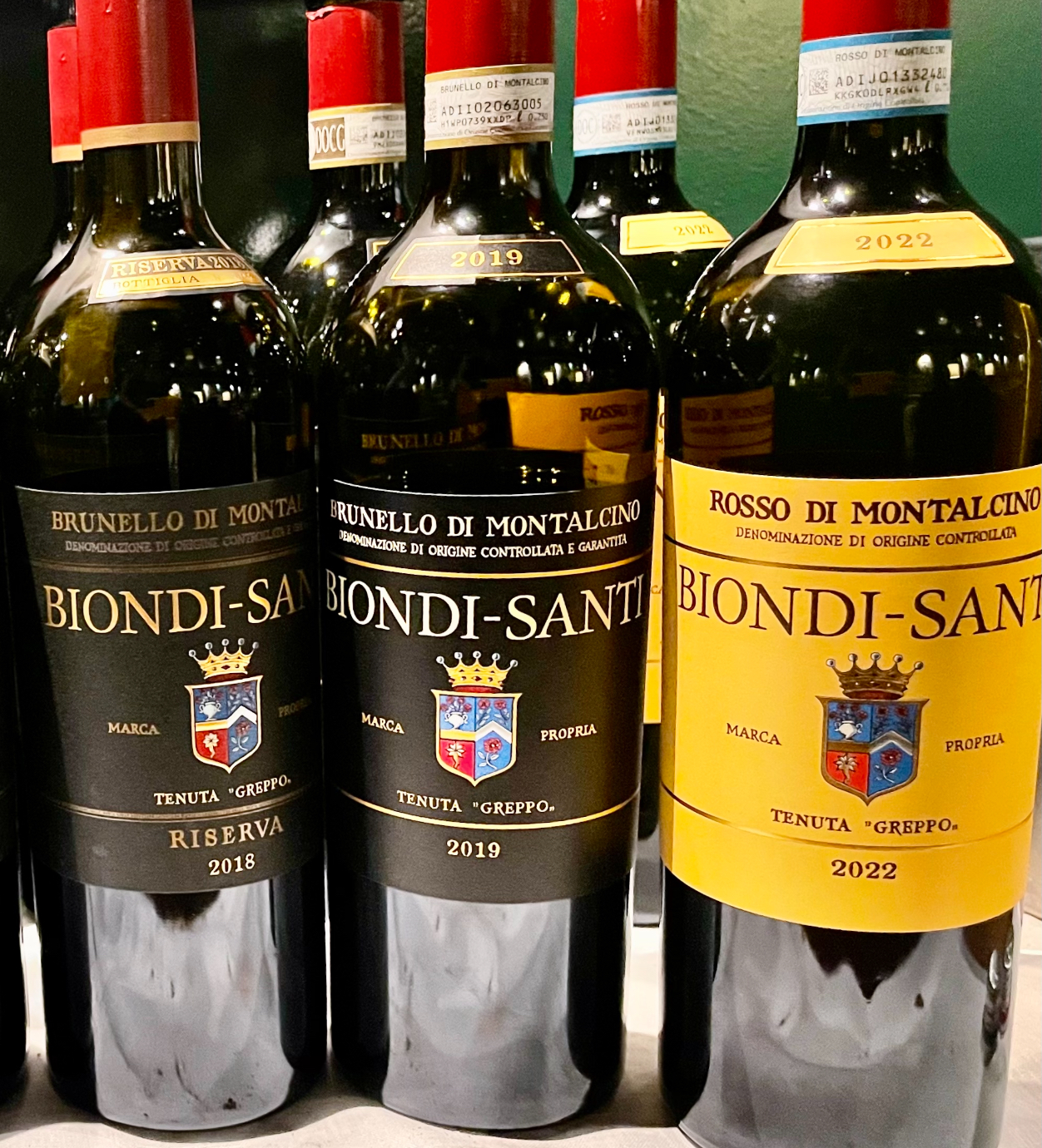
In the world of wine, few names carry the weight of Biondi-Santi. The estate gave birth to Brunello in 1888, setting the standard for the wines of Montalcino. For over a century, generations of the Biondi-Santi family produced austere, long-lived wines at their prized Tenuta Greppo estate that delivered the area's finest expression of Sangiovese Grosso.
When the Biondi-Santi family sold their ancestral winery to French investment firm EPI Group in 2016, some feared a shift away from the style that made the wines legendary. However, the new team, led by Managing Director Giampiero Bertolini, has taken an approach best summed up in their motto: evolution, not revolution.
 “We inherited an incredible estate with a huge story,” says Bertolini (in photo at right), “and we could not come in and make a revolution.” Their goal is to keep Biondi-Santi true to its roots while dealing with modern challenges like climate change.
“We inherited an incredible estate with a huge story,” says Bertolini (in photo at right), “and we could not come in and make a revolution.” Their goal is to keep Biondi-Santi true to its roots while dealing with modern challenges like climate change.
This balancing act was on full display in New York City, where Bertolini introduced the winery’s latest releases—Rosso di Montalcino 2022, Brunello di Montalcino 2019, and Brunello di Montalcino Riserva 2018—alongside older vintages, including a stunning 1975. This release is particularly significant, as it marks the first time all three wines reflect the new team.
“It's a real pleasure to show these wines,” Bertolini said. “I'm very curious and a little nervous to know what you think.”
The Pursuit of Elegance
For Biondi-Santi, 2025 marks a year dedicated to the theme of elegance—a quality that has defined the estate since its beginning, even down to its packaging. “Long ago, when the Biondi-Santis made their first Brunello,” said Bertolini, "they wanted it to stand out for its elegance, so they used Bordeaux bottles instead of the traditional straw-covered fiasco bottles.”
On the winery’s podcast, La Voce di Biondi-Santi, Bertolini and winemaker Federico Radi (in photo below) elaborate on the topic. “Elegance is part of the company’s DNA,” explains Bertolini, “and a key element in our production philosophy.”
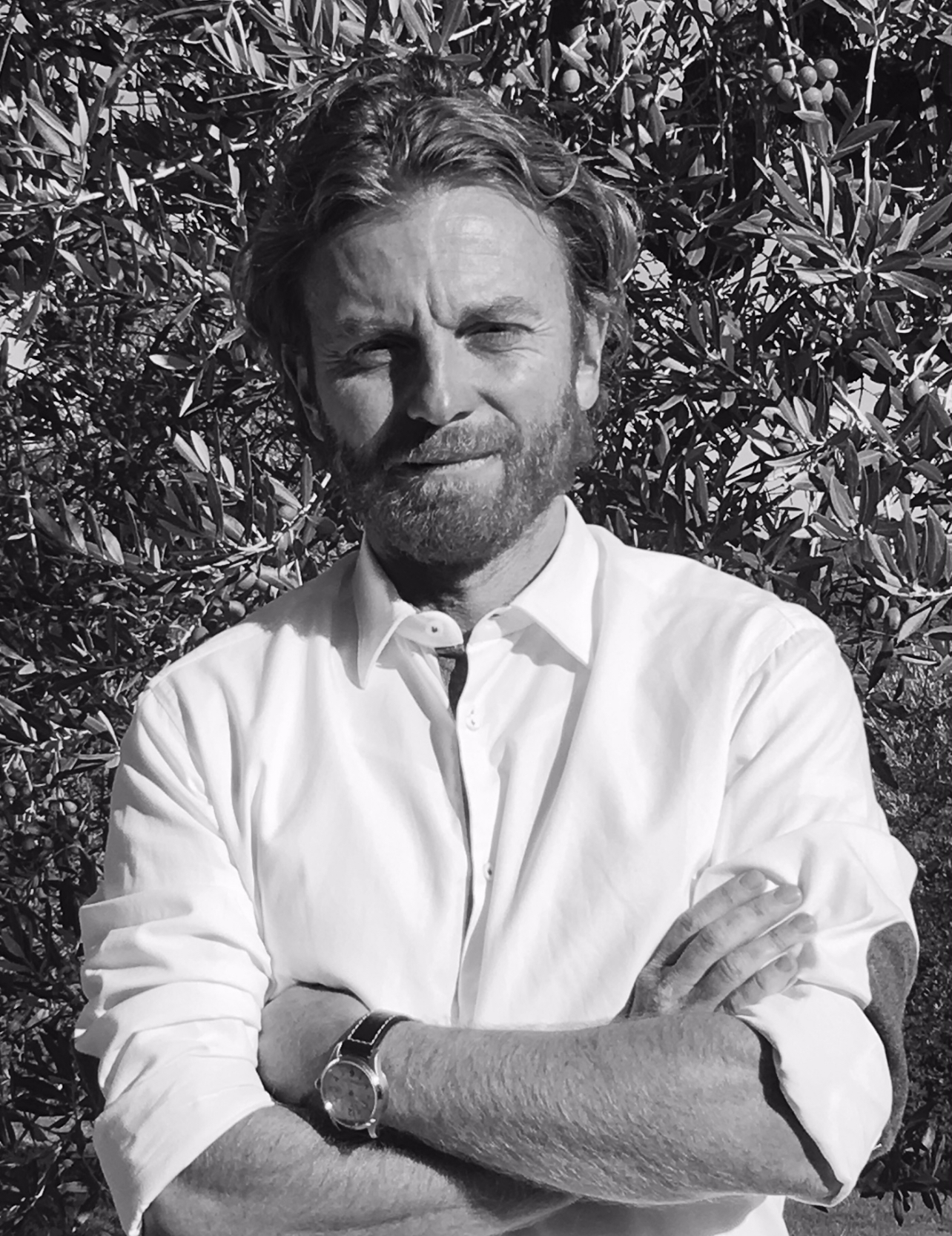 Radi defines elegance in wine as grace, balance, and complexity. “An elegant wine is never excessive,” he says. “When we drink an elegant wine, we always remember it.”
Radi defines elegance in wine as grace, balance, and complexity. “An elegant wine is never excessive,” he says. “When we drink an elegant wine, we always remember it.”
He explains that the Biondi-Santi family was the first to make a 100% Sangiovese wine: “They discovered that long aging in oak barrels could soften its sharpness, resulting in wines of remarkable longevity and elegance.”
For centuries prior, Sangiovese was considered too harsh to stand alone. Winemakers across Tuscany traditionally blended it with varieties like Canaiolo, Colorino, and even white grapes to tame its harsh tannins and high acidity. This practice was so common that pure Sangiovese wines simply didn't exist.
The Biondi-Santi innovation—using extended barrel aging rather than blending—allowed Sangiovese's complex flavors to evolve while softening its aggressive edges. Their approach proved that the grape could produce refined wines without the addition of other varieties.
This commitment to style and restraint has sometimes put Biondi-Santi at odds with prevailing tastes. "At the end of the 1990s and the beginning of the 2000s, the market was dictated by trends that ran in the opposite direction to what we produced," Bertolini recalls. "People wanted very dark and structured wines with a high alcohol content. They wanted opulence, not elegance. But the Biondi-Santi family has always made wines of elegance.”
Protecting a Legacy
 The new team at Biondi-Santi is upholding this legacy of elegant, age-worthy wines through careful research and innovation in the vineyard and cellar.
The new team at Biondi-Santi is upholding this legacy of elegant, age-worthy wines through careful research and innovation in the vineyard and cellar.
One of their first major projects—the parcellation study—is a deep study of the soils, led by Chilean terroir expert Pedro Parra. The goal was to identify the estate’s best vineyard parcels and vinify them separately, rather than blending everything together.
“At the end of that study, We identified 12 specific parcels that we now keep separate,” said Bertolini. “These are the ‘ingredients’ we use to make our wines.”
The second major project involves the vines themselves. Historically, Biondi-Santi relied on a single Sangiovese Grosso clone, selected by Franco Biondi Santi over decades of research. But climate change has forced a rethink. Bertolini’s team discovered an old vineyard with 50 distinct biotypes—essentially a genetic library of the grape.
“We did a sort of massal selection,” he said. “Now, we are replanting those different Sangiovese vines, growing them in a small nursery at the estate. Most of these wines are still produced with just one clone, but the concept for the future most likely will be to have more clones, to have our own specific recipe to counteract the negative effects of climate change.”
Adapting to The Times
For producers in Montalcino, climate change is altering how they farm. Higher temperatures mean higher sugar levels, translating to higher alcohol wines—something Biondi-Santi has always resisted. “The alcohol level we had in the ‘70s and mid-‘80s, which was around 12.5%, is not possible anymore,” Bertolini said. “But we are able, at least today, to stay below 14%, and that is our target, keeping the balance.”
 Another key adaptation is a new V-shaped trellising system designed to protect the fruit from excessive sun exposure. “The system allows better heat management,” Bertolini said. “It’s like an umbrella—the sun doesn’t hit the fruit directly, yet the wind can get through and keep the fruit dry.” This small but significant shift helps preserve acidity and freshness in the wines.
Another key adaptation is a new V-shaped trellising system designed to protect the fruit from excessive sun exposure. “The system allows better heat management,” Bertolini said. “It’s like an umbrella—the sun doesn’t hit the fruit directly, yet the wind can get through and keep the fruit dry.” This small but significant shift helps preserve acidity and freshness in the wines.
Improving soil health is also high on the list of priorities. Healthier soils mean vines that are better equipped to handle heat and drought. When the new team took over, they found the organic matter in the vineyards was low—below 0.5%. They’ve worked to rebuild it, planting cover crops and carefully managing nutrients. “After measuring it year after year, we see that we’re rebuilding the organic matter,” Bertolini noted. “It is already above 1.3 to 1.4%, which is a good level.”
The results of these measures are only just beginning to show in the wines, but the hope is that a more precise understanding of the land and the vines will help to maintain the estate’s signature style as new weather patterns emerge.
Tasting the Evolution
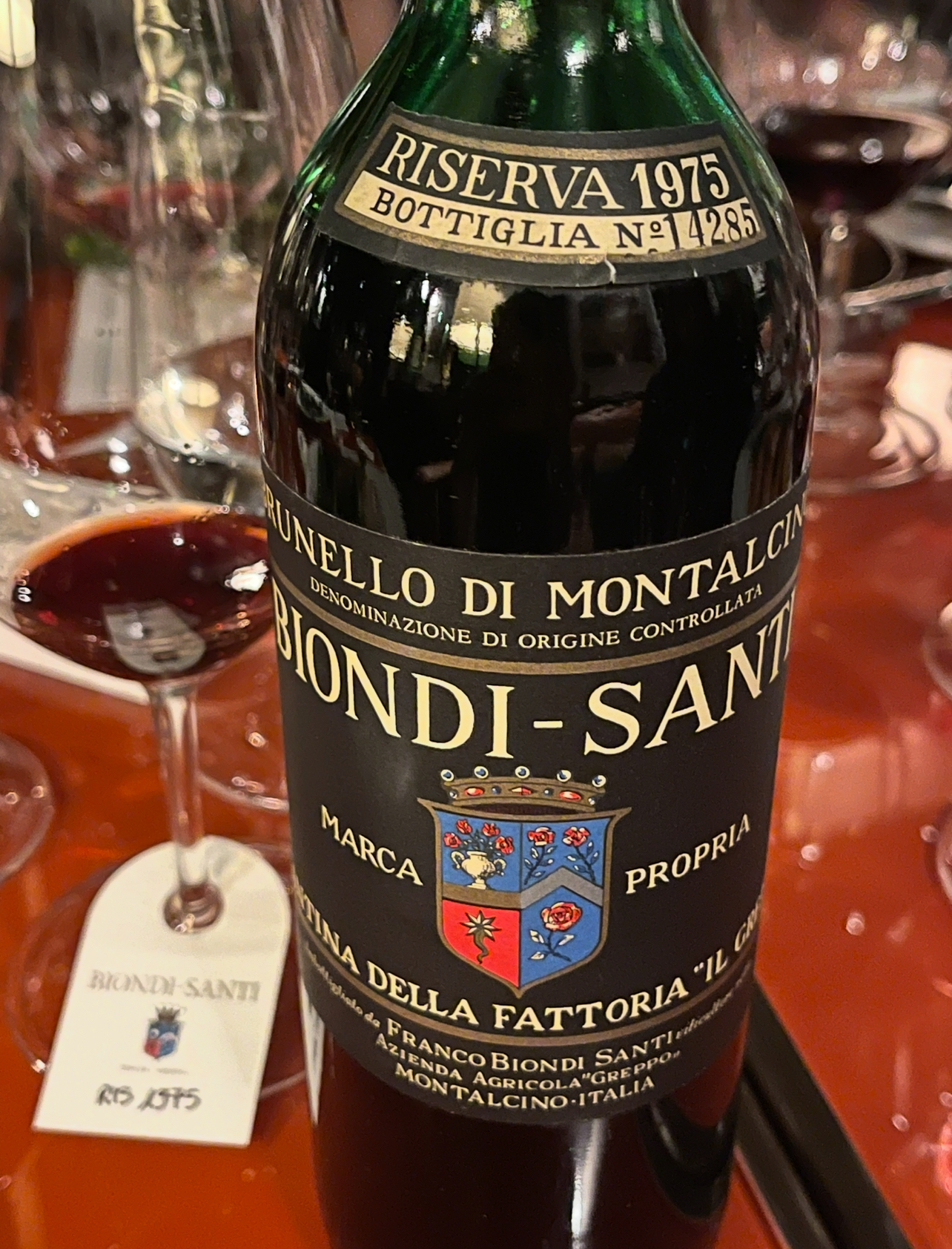 The three new releases illustrate the estate’s philosophy and the realities of modern winemaking. The Rosso di Montalcino 2022 comes from an extremely hot and dry year, but it still carries Biondi-Santi’s trademark brightness. It’s not a wine built for long aging, but it shows how the estate is managing extreme conditions while keeping its style intact.
The three new releases illustrate the estate’s philosophy and the realities of modern winemaking. The Rosso di Montalcino 2022 comes from an extremely hot and dry year, but it still carries Biondi-Santi’s trademark brightness. It’s not a wine built for long aging, but it shows how the estate is managing extreme conditions while keeping its style intact.
The Brunello di Montalcino 2019 is a different story. Bertolini calls ‘19 “the perfect vintage,” and the wine reflects that. It has the structure, depth, and lift that define great Biondi-Santi Brunello. If climate change makes vintages like this rarer, the work being done in the vineyard becomes even more critical.
Then there’s the Brunello Riserva 2018. The Riserva is the wine that carries the most weight, both figuratively and literally. The Riserva comes from the estate’s oldest vines and has only been released 41 times since 1888, with each production being extremely limited. Biondi-Santi’s Riservas are built for decades in the cellar, and while 2018 wasn’t an easy year, the wine is already drinking beautifully.
Radi has a particular affinity for this challenging vintage: “2018 was a very uneven year in Montalcino. . . so much depended on the work we did in the vineyards and how we chose just the right parcels for the Riserva. When I taste this wine, I can't help but be amazed at its elegance, even though it was a particularly cold and rainy vintage.”
The older vintages on the table—1975, 1983, and 1997—were reminders of what Biondi-Santi has always been about. These wines are vibrant, with a depth and complexity that only time can bring.
Looking Ahead
There’s no blueprint for maintaining tradition in the face of climate change. Every region, every estate, has to find its own way forward. Biondi-Santi’s approach—deep research, careful adaptation, and an unwavering commitment to its identity—offers one model.
The work isn’t done. The new clones will take years to evaluate. The trellising system is still being refined. And climate change itself remains an unpredictable variable. But the results so far suggest that Biondi-Santi is on the right path. For wine lovers, that means one thing: the qualities that made these wines legendary aren’t going anywhere. If anything, they might just be getting stronger.
